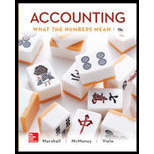
Introduction:
The paid up capital for any company are always recorded in the par value, and whatever extra received over and above the par value is the premium payment which is shown under the additional paid up capital below the paid up capital heading.
The dividend for preference shareholders are always fixed and are paid on the basis of fixed percentage multiplied by the par value of capital. However, the cash dividend for common stock is dependent upon the earnings and decided by the boards.
Requirement-a:
To Calculate:
The total amount of dividend requirement on
Introduction:
The paid up capital for any company are always recorded in the par value, and whatever extra received over and above the par value is the premium payment which is shown under the additional paid up capital below the paid up capital heading.
The dividend for preference shareholders are always fixed and are paid on the basis of fixed percentage multiplied by the par value of capital. However, the cash dividend for common stock is dependent upon the earnings and decided by the boards.
Requirement-b:
To Calculate:
The total amount of preferred stock on
Introduction:
The paid up capital for any company are always recorded in the par value, and whatever extra received over and above the par value is the premium payment which is shown under the additional paid up capital below the paid up capital heading.
The dividend for preference shareholders are always fixed and are paid on the basis of fixed percentage multiplied by the par value of capital. However, the cash dividend for common stock is dependent upon the earnings and decided by the boards.
Requirement-c:
To Calculate:
The number of common shares issued and outstanding
Introduction:
The paid up capital for any company are always recorded in the par value, and whatever extra received over and above the par value is the premium payment which is shown under the additional paid up capital below the paid up capital heading.
The dividend for preference shareholders are always fixed and are paid on the basis of fixed percentage multiplied by the par value of capital. However, the cash dividend for common stock is dependent upon the earnings and decided by the boards.
Requirement-d:
To Calculate:
The number of shares sold and selling price
Introduction:
The paid up capital for any company are always recorded in the par value, and whatever extra received over and above the par value is the premium payment which is shown under the additional paid up capital below the paid up capital heading.
The dividend for preference shareholders are always fixed and are paid on the basis of fixed percentage multiplied by the par value of capital. However, the cash dividend for common stock is dependent upon the earnings and decided by the boards.
Requirement-e:
To Indicate:
The transaction for additional paid in capital
Introduction:
The paid up capital for any company are always recorded in the par value, and whatever extra received over and above the par value is the premium payment which is shown under the additional paid up capital below the paid up capital heading.
The dividend for preference shareholders are always fixed and are paid on the basis of fixed percentage multiplied by the par value of capital. However, the cash dividend for common stock is dependent upon the earnings and decided by the boards.
Requirement-f:
To Calculate:
The amount of common dividend
Want to see the full answer?
Check out a sample textbook solution
Chapter 8 Solutions
Accounting: What the Numbers Mean
- Can you solve this financial accounting problem using appropriate financial principles?arrow_forwardCan you solve this general accounting question with accurate accounting calculations?arrow_forwardPlease explain the solution to this general accounting problem with accurate explanations.arrow_forward
- I am looking for help with this general accounting question using proper accounting standards.arrow_forwardEddie Woodworks manufactures custom shelving. During the most productive month of the year, 4,200 units were manufactured at a total cost of $73,500. In the month of lowest production, the company made 1,600units at a cost of $49,800. Using the high-low method of cost estimation, total fixed costs are__.arrow_forwardPlease provide the correct answer to this financial accounting problem using valid calculations.arrow_forward

 AccountingAccountingISBN:9781337272094Author:WARREN, Carl S., Reeve, James M., Duchac, Jonathan E.Publisher:Cengage Learning,
AccountingAccountingISBN:9781337272094Author:WARREN, Carl S., Reeve, James M., Duchac, Jonathan E.Publisher:Cengage Learning, Accounting Information SystemsAccountingISBN:9781337619202Author:Hall, James A.Publisher:Cengage Learning,
Accounting Information SystemsAccountingISBN:9781337619202Author:Hall, James A.Publisher:Cengage Learning, Horngren's Cost Accounting: A Managerial Emphasis...AccountingISBN:9780134475585Author:Srikant M. Datar, Madhav V. RajanPublisher:PEARSON
Horngren's Cost Accounting: A Managerial Emphasis...AccountingISBN:9780134475585Author:Srikant M. Datar, Madhav V. RajanPublisher:PEARSON Intermediate AccountingAccountingISBN:9781259722660Author:J. David Spiceland, Mark W. Nelson, Wayne M ThomasPublisher:McGraw-Hill Education
Intermediate AccountingAccountingISBN:9781259722660Author:J. David Spiceland, Mark W. Nelson, Wayne M ThomasPublisher:McGraw-Hill Education Financial and Managerial AccountingAccountingISBN:9781259726705Author:John J Wild, Ken W. Shaw, Barbara Chiappetta Fundamental Accounting PrinciplesPublisher:McGraw-Hill Education
Financial and Managerial AccountingAccountingISBN:9781259726705Author:John J Wild, Ken W. Shaw, Barbara Chiappetta Fundamental Accounting PrinciplesPublisher:McGraw-Hill Education





